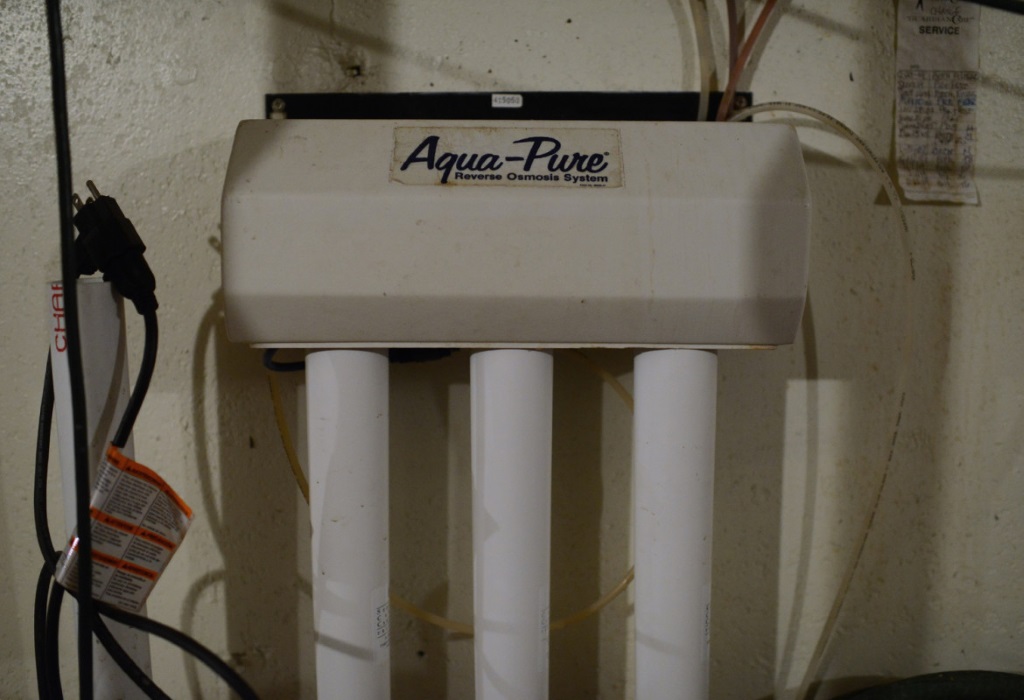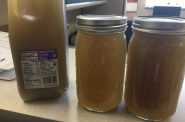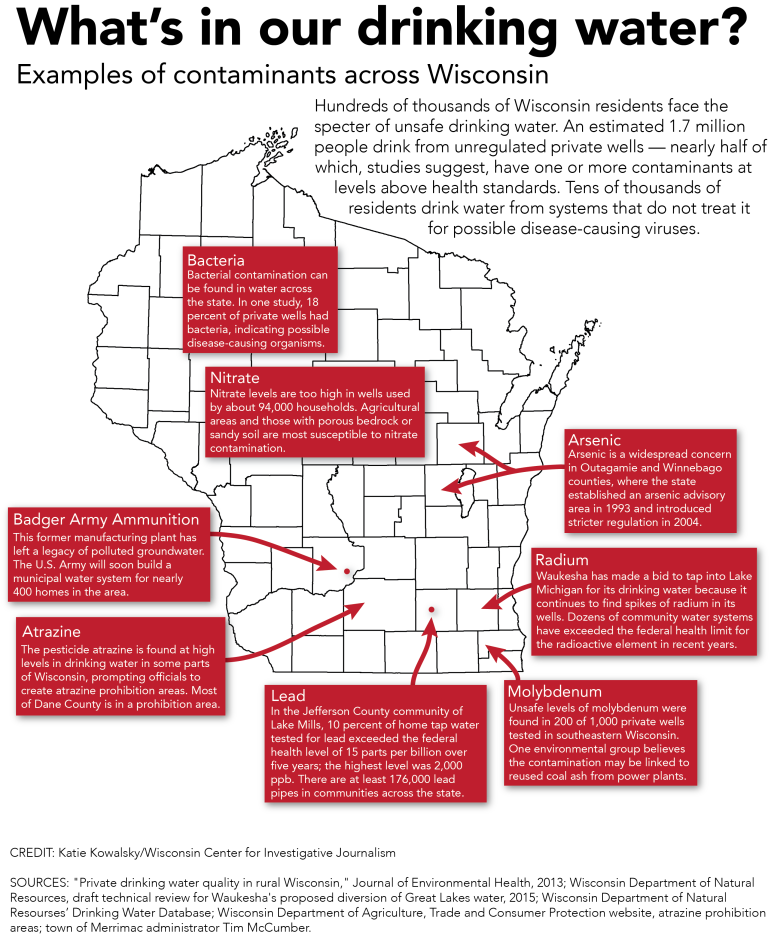Wisconsin A Leader in Strontium Pollution
73 of 100 worst readings in strontium-laced drinking water were in Waukesha, Brookfield, other towns.
Strontium levels high
Some samples collected from public water systems in Washington and Waukesha counties turned up strontium concentrations as high as 53 and 37 mg/L, respectively, well above both the short- and long-term advisory levels set by the EPA.
Still, exactly what this means for people living in affected areas is not yet clear.
In calculating safe concentrations, the EPA considers body weight, drinking water intake and the level of exposure to a contaminant believed to be from drinking water, along with an estimate of the level of daily exposure from other sources. Irving explained that it is important to note that these factors differ among people, as does their nutritional status.
Said Luczaj: “Strontium is important, especially if you have young children. But if it’s just a little above the lifetime value, I wouldn’t worry about it. Unless the strontium is very high, I wouldn’t worry about it.”
When Schnur received notice of the elevated level of strontium in his well water, it reaffirmed his decision to keep using bottled water.
“I just don’t trust people when it comes to water. I really don’t,” Schnur said.
One of the reasons people may become alarmed when they find strontium in their water is the prominence of its radioactive relative, strontium-90, which is associated with above-ground nuclear testing. But it is naturally occurring strontium, which is not radioactive, that is found in Wisconsin.
Where high concentrations were found in places including Cedarburg, Germantown and Kiel, water utility managers there said more than 90 percent of homes already have water softeners. It is unclear, however, how many people are drinking the softened water, which some people avoid because it has added sodium. While drinking softened water is not considered harmful for most healthy adults, people on sodium-restricted diets are advised to consider other options.
Brookfield Water Utility Superintendent Mark Simon said most of his water customers already have water softeners. He said some people also have reverse osmosis systems, which force water through a semipermeable membrane to remove dissolved salts and contaminants.
Strontium problem centered on eastern Wisconsin
The samples from public water systems in Brookfield and others around the country were collected as part of the EPA’s Unregulated Contaminant Monitoring Rule program.
Under the Safe Drinking Water Act, the agency is required to decide whether to regulate at least five unregulated contaminants every five years. The act sets mandatory standards for public water systems.
Previous studies have estimated that strontium occurs at levels of concern in 7 percent of public water systems in the country. That information, coupled with the knowledge of its potential health effects, led the EPA to make a preliminary decision in 2014 to begin developing strontium regulation.
Before the EPA began collecting data in 2013, however, Luczaj, the UW-Green Bay professor, conducted a regional study of wells, focused on Brown and Outagamie counties, to map the distribution of strontium in the eastern part of the state and determine its source.
In his paper published in 2015, Luczaj found high levels of strontium in “an arc-shaped band through eastern Wisconsin from suburban Milwaukee up through Brown, Outagamie, Calumet, Door, Oconto and Marinette counties.”
Although Luczaj does not consider strontium to be among the most significant groundwater contaminants, he said it is something people should know about. He emphasized the state’s top water quality concerns are bacteria and nitrate, with up to half of the wells tested above health standards in some counties.
“Strontium’s probably more of a long-term issue, especially for children, but for adults it’s probably not as significant of a problem,” Luczaj said. “But we don’t know because there hasn’t been a lot of work on it.”
Geology affects strontium
Luczaj said strontium is present in such high levels in certain areas of Wisconsin because of the presence of a particular type of bedrock stretching from Illinois to Upper Michigan along the eastern part of the state.
Sometime between 200 million and 400 million years ago, water moved out of the deep sedimentary rock in Michigan into aquifers in Wisconsin.

Vicky and Bud Harris of rural De Pere remove pollutants from their drinking water using a reverse osmosis filtering system, a water softener and an iron removal system. The Harris’ private well water is tainted with strontium, which is a naturally occurring contaminant. Photo by Kyle Bursaw of Press-Gazette Media.
That “precipitated a bunch of different minerals in different locations,” Luczaj said. “One of the minerals was strontium sulfate, called celestium, and that’s the mineral that is dissolving and causing the strontium problem.”
Other inorganic contaminants, such as arsenic and fluoride, are also related to the same water-rock interaction. Where they turn up depends on the chemistry in particular areas of the state. Luczaj said arsenic contamination in drinking water is further west, where oxidation is taking place, while strontium is farther east, where dissolution is happening.
Tainted Water
-
Fecal Microbes In 60% of Sampled Wells
 Jun 12th, 2017 by Coburn Dukehart
Jun 12th, 2017 by Coburn Dukehart
-
State’s Failures On Lead Pipes
 Jan 15th, 2017 by Cara Lombardo and Dee J. Hall
Jan 15th, 2017 by Cara Lombardo and Dee J. Hall
-
Lax Rules Expose Kids To Lead-Tainted Water
 Dec 19th, 2016 by Cara Lombardo and Dee J. Hall
Dec 19th, 2016 by Cara Lombardo and Dee J. Hall






















